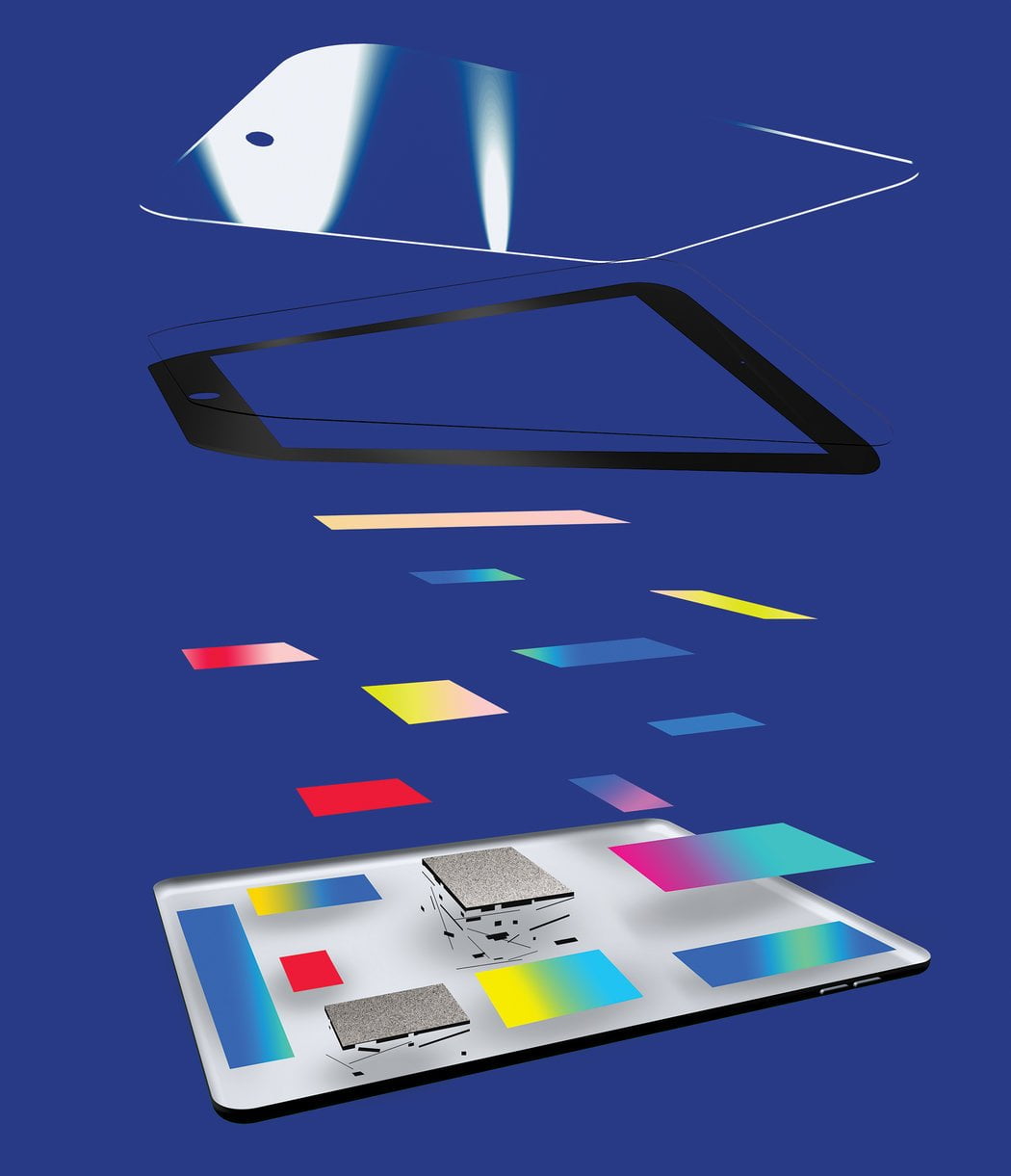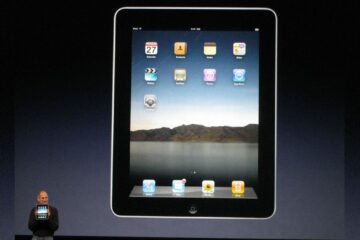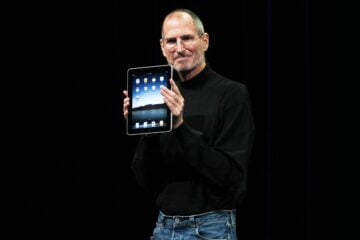
My old iPad just turned five, and it’s starting to die. If it could wonder about such things, it might question this prognosis. Its memory, after all, still retrieves information as quickly as it ever did. Its face hasn’t aged a day, projecting as vividly as it did in 2012, when Apple called it “stunning” and “gorgeous.” It hasn’t suffered vision loss; the camera still works. The touch-screen works. Buttons work. Speaker, headphone jack, charging port: All still do what I ask of them. On examination, almost nothing about the device seems to have changed. And yet it’s starting to give up, and so am I.
I’ve lost plenty of devices before, but this death feels different. When my old iPad is powered down, it seems practically new; when I turn it on, it feels instantly old. Tap the familiar YouTube app, and I am met with a pregnant pause: one, two, three, app. Ditto for the App Store, Podcasts, Netflix and e-books. Newer games are often out of the question, which wouldn’t bother me much if Safari, the web browser, wasn’t constantly overwhelmed by complicated pages. My attempt to install an alternative browser ended with this message: Firefox requires iOS 10.3 or later. My old iPad stopped getting updates in the 9s. I wouldn’t say my old electronics always aged gracefully, but their obsolescence wasn’t a death sentence. My old digital camera doesn’t do what some new cameras do — but it’s still a camera. My iPad, by contrast, feels as though it has been abandoned from on high, cut loose from the cloud on which it depends.
It hasn’t been used up; it’s just too old. A pristine iPad from the same era, forgotten in a storeroom and never touched, would be equally useless. The moment it came online, it would demand to be updated; as soon as it was, it would find itself in the same grim predicament as my device, which has been at work for half a decade.
If my old iPad could talk, it might ask me what has changed. If it could feel indignant, it might suggest that it isn’t the problem, and that everyone and everything else is. While it would be wrong according to the logic of its creation, it wouldn’t be incorrect. It is a piece of consumer technology, so you would expect that everything around it — its own software, Apple’s new products, the internet on which it depends — would have improved in the last five years, and that it would suffer in comparison. What seems unfair is that my old iPad, because it does nothing but provide access to these ever-evolving services, necessarily has to get worse and that it may, before long, have nowhere to go. Above all, my old iPad has revealed itself as a cursed object of a modern sort. It wears out without wearing. It breaks down without breaking. And it will be left for dead before it dies.
My old iPad is, to be precise, a late-2012 iPad Mini, model number A1432, black, with 16 gigabytes of storage. It retailed, at release, for $329. It has a few scratches and a couple of flat spots on its metal edges, where it made contact with one hard surface or another, but it’s otherwise the same thin, shiny slate that I popped out of its plastic packaging five years ago. It isn’t worn in; in fact, it has acquired no physical character at all. In many ways, it’s the exact opposite of a baseball mitt in its resistance to sentiment and nostalgia. It exists in memory, barely, as a sort of rectangular green screen, disappearing completely until I remember that it had to have been there. It has been present for the entirety of my relationship with my wife but holds no special significance to us. It has been handled by every member of my immediate family, not all of whom are still alive, but I couldn’t tell you what any of them did with it. The device seems to repel whatever personal experiences it is exposed to; it has a coating on its screen that resists fingerprints.

Fifteen years ago, before I would replace a desktop computer or a laptop, it would have quite conspicuously broken down, its fans getting louder, its spinning hard drive grinding to a halt. When I would replace it with something newer or faster or more capable, it would enter a promising second life: it could be repurposed as a spare, a computer for a friend, a terminal for playing old games or for doing undistracted work. It could be given to someone who could make use of it.
As I did when I first got it, I still use my old iPad for passive consumption: reading, watching videos, checking feeds. My routine has barely changed, but one by one, formerly easy tasks have become strained. Social apps have become slow, videos take longer to load and Safari can’t seem to handle the most important and fundamental services of the modern web.
As my iPad has aged, I’ve started to notice it more, not because I’m growing fonder, but because I’m getting frustrated: by the fact that it won’t do what it ought to or even what it used to. But what I find most frustrating of all is the gradual disappearance of all options other than buying a new iPad. I understand the reasons for this. I understand the concept of “planned obsolescence” less as a conspiracy than as the unfortunate but universal prerogative of dominant, profit-driven companies that make their money from selling hardware.
In a world more accommodating toward my old iPad, I might squeeze another five years out of it by replacing the one part of these devices that tends to fail: the battery. I could purchase a kit from a site like iFixit, with a fresh battery and tools to pry my iPad apart, for $39.99. But the repair is quite involved and requires, among 71 other steps, heating up the device in order to pry its screen free of its glue. I could send it to Apple, which says out-of-warranty iPad battery service is $99 plus $6.95 in shipping plus local taxes, which totals more than I would get if I sent it to an Apple partner called Brightstar to be “recycled”: a $45 gift card to the Apple store. Lower down the rung is Gazelle, a company that buys old devices and resells them, often abroad. A tool on their website offered me $30, conditionally.
But the iPad was never really meant to be tinkered with, examined or torn open and modified. When it first appeared, Steve Jobs pitched it as essentially a portal: a simple tool for consumption, as useful and wonderful as the seemingly infinite things that might manifest on its screen. This was accurate on more than one level. It was a tool for consumption, sure, but it was also a consumable. Early criticism of the device, which was minor and muffled by enormous sales, focused on the few things that made it noticeable, like its weight or the size of the black border around its screen. (The iPad Mini was an answer to both complaints.) It was, in contrast to the iPhone from which it descended, understood by its users as simply good enough — not life-changing, but handy. It was to be used until its users started noticing it, at which point it was to be replaced. It was, like the iPhone, immune to attachment. But unlike the iPhones, which might be reclaimed by a cellular carrier as part of a scheduled trade-in or just shoved aside by a two-year upgrade, iPads tend to linger. They have time to reveal their tragic thingness.
Perhaps the best option is to sell my old iPad overseas to a consumer who understands what it is: not quite an iPad, but nevertheless a machine that will still chat, that will manage FaceTime, that can receive email or maybe take payments for a shop. But before long, it will lose the ability to do these things. It will still be a wonder of industrial design and a technological marvel, right up until the moment it is destroyed for scrap.
[“Source-gadgets.ndtv”]



